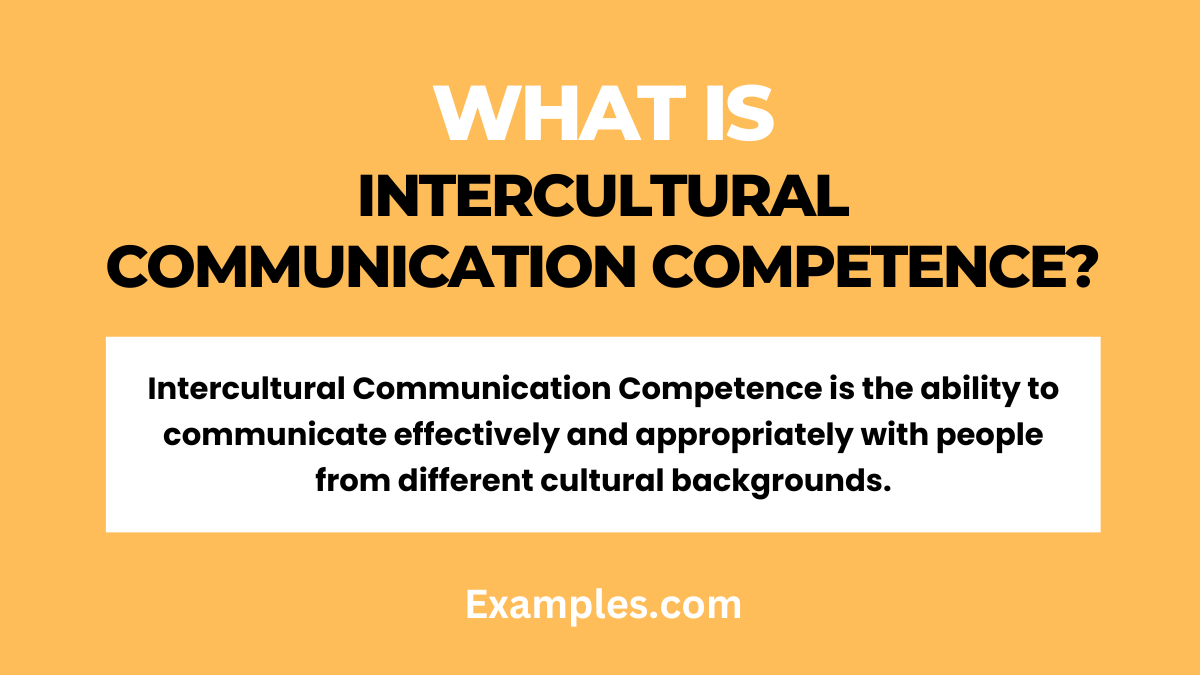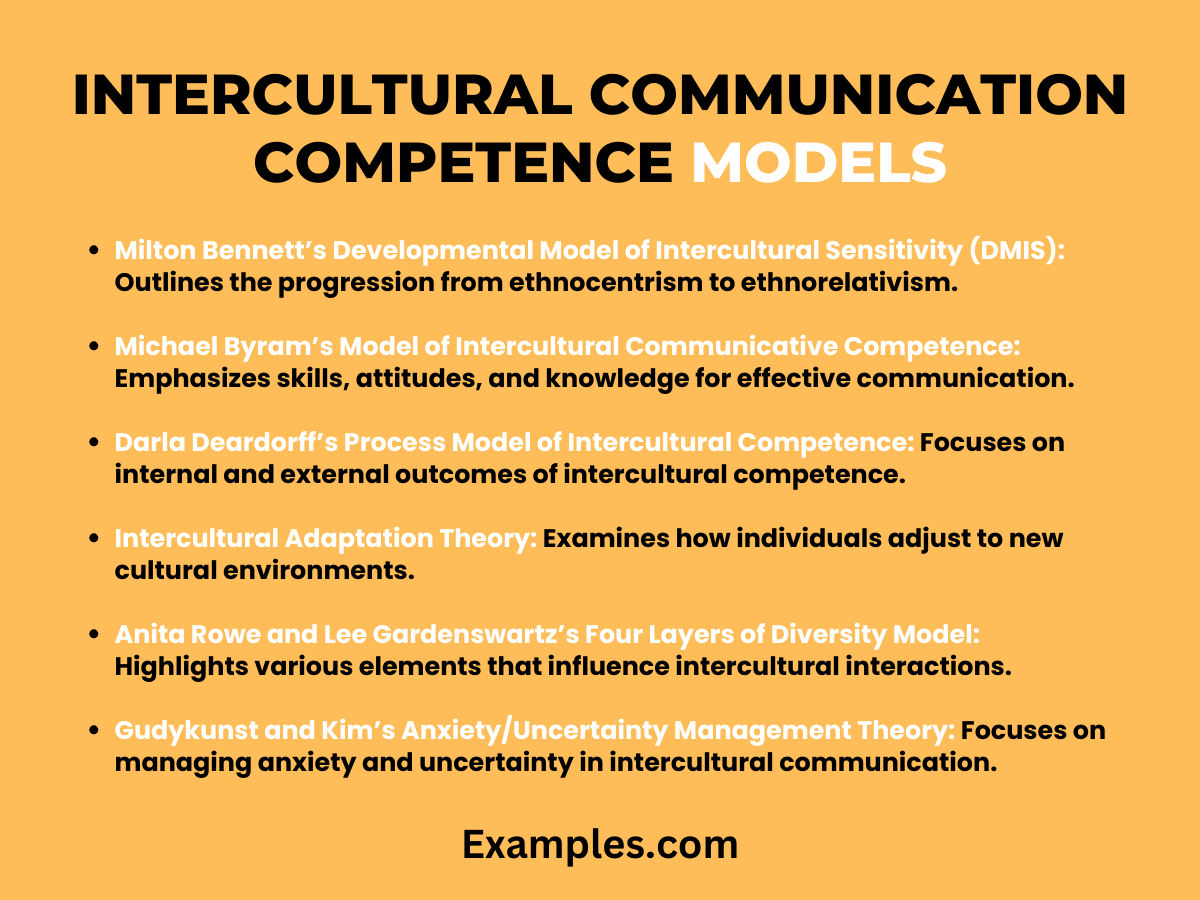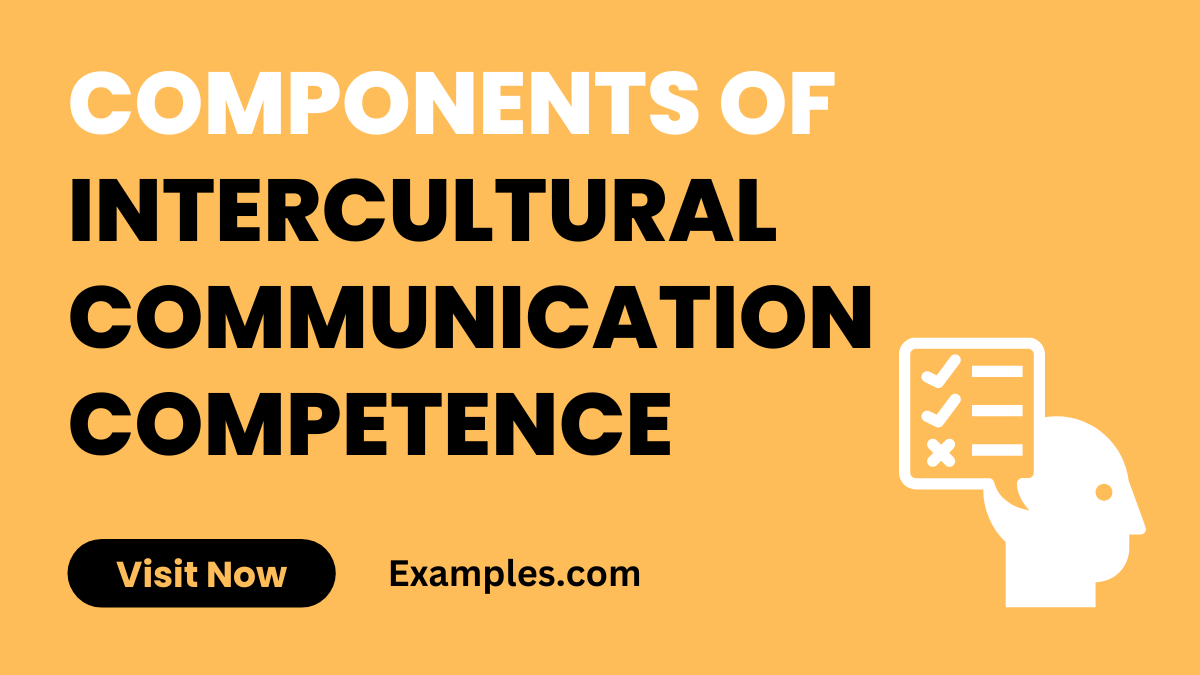14+ Components of Intercultural Communication Competence Examples
Dive into the vital components of Intercultural Communication Competence with this detailed guide. As our world becomes increasingly interconnected, understanding these elements is essential for successful global interactions. This guide not only details each component but also provides practical Intercultural Communication Examples, demonstrating how to apply these skills in real-life scenarios. Whether for personal growth or professional development, mastering these components is key to thriving in diverse cultural landscapes.
What is Intercultural Communication Competence?

Intercultural Communication Competence is the ability to communicate effectively and appropriately with people from different cultural backgrounds. It involves understanding cultural differences, being able to express yourself clearly in diverse settings, and showing respect and empathy towards others’ cultural perspectives. This competence enables individuals to navigate various cultural contexts smoothly, fostering positive and productive interactions in a multicultural world.
15 Components of Intercultural Communication Competence
Delve into the crucial Components of Intercultural Communication Competence, integral for thriving in today’s culturally diverse world. This comprehensive guide highlights twenty key components, each vital for effective intercultural interactions. From empathy to cultural adaptation, these components are the building blocks for anyone looking to excel in cross-cultural communication. Understanding and developing these skills can significantly enhance your ability to engage respectfully and effectively with people from various cultural backgrounds, whether in personal, professional, or educational settings.

1. Empathy: Understanding and sharing the feelings of others from different cultural backgrounds. Empathy fosters deeper connections and more meaningful communication.
2. Cultural Awareness: Being aware of the cultural differences and similarities. This awareness helps in tailoring communication to be culturally sensitive.
3. Open-mindedness: Willingness to accept and respect different cultural perspectives. Open-mindedness prevents misunderstandings and promotes inclusivity.
4. Adaptability: Adjusting communication styles to suit different cultural norms. Adaptability is key in diverse environments to ensure effective interaction.
5. Linguistic Ability: Proficiency in multiple languages or understanding of non-verbal cues. This ability helps bridge communication gaps in multicultural settings.
6. Patience: Taking time to understand and respect cultural differences in communication. Patience is crucial for avoiding frustration and miscommunication.
7. Active Listening: Fully concentrating, understanding, responding, and remembering what is being said. Active listening ensures accurate understanding in intercultural conversations.
8. Non-Verbal Communication Skills: Understanding and appropriately using body language, gestures, and facial expressions that may vary across cultures.
9. Conflict Resolution Skills: Effectively handling and resolving misunderstandings or disagreements that arise from cultural differences.
10. Self-Awareness: Recognizing one’s own cultural biases and how they impact communication. Self-awareness helps in adjusting behaviors and perceptions.
11. Tolerance for Ambiguity: Comfort with uncertain and unfamiliar intercultural interactions. This tolerance helps in navigating new cultural experiences without distress.
12. Cultural Intelligence (CQ): The capability to relate and work effectively across cultures. High CQ leads to more successful intercultural interactions.
13. Respect for Diversity: Valuing and showing respect for cultural differences. This respect is fundamental in creating an inclusive communication environment.
14. Perspective Taking: The ability to see a situation from another culture’s viewpoint. Perspective taking enhances understanding and reduces cultural misunderstandings.
15. Curiosity: A strong desire to learn about other cultures. Curiosity drives the pursuit of cultural knowledge and understanding.
Intercultural Communication Competence Models
Intercultural Communication Competence Models provide frameworks for understanding how individuals effectively communicate across cultural boundaries. These models encompass theories and practices essential for navigating the complexities of diverse cultural interactions, focusing on skills like empathy, adaptability, and cultural awareness. They are instrumental in guiding individuals and organizations to develop strategies for effective Intercultural Communication.

- Milton Bennett’s Developmental Model of Intercultural Sensitivity (DMIS): Outlines the progression from ethnocentrism to ethnorelativism.
Example: Initially, an individual might view their culture as central (ethnocentrism) but gradually learns to appreciate and understand other cultures (ethnorelativism). - Michael Byram’s Model of Intercultural Communicative Competence: Emphasizes skills, attitudes, and knowledge for effective communication.
Example: An individual learns foreign languages, understands other cultures, and develops a positive attitude towards cultural differences. - Darla Deardorff’s Process Model of Intercultural Competence: Focuses on internal and external outcomes of intercultural competence.
Example: Internal outcome includes flexible thinking, while external outcome involves the ability to behave appropriately in intercultural situations. - Intercultural Adaptation Theory: Examines how individuals adjust to new cultural environments.
Example: An expatriate learns to adapt their behavior and communication to fit into a new cultural setting. - Anita Rowe and Lee Gardenswartz’s Four Layers of Diversity Model: Highlights various elements that influence intercultural interactions.
Example: Recognizes and integrates factors like organizational culture, internal dimensions, external dimensions, and personality into communication. - Gudykunst and Kim’s Anxiety/Uncertainty Management Theory: Focuses on managing anxiety and uncertainty in intercultural communication.
Example: An individual uses strategies to reduce anxiety when interacting with people from different cultures. - Edward T. Hall’s Context Theory: Differentiates between high-context and low-context cultures in communication.
Example: Understanding that high-context cultures rely more on non-verbal cues compared to low-context cultures. - Fons Trompenaars’ Model of National Culture Differences: Identifies key dimensions where cultures differ.
Example: Navigating different cultural attitudes towards time, relationships, and the environment. - Geert Hofstede’s Cultural Dimensions Theory: Explores the impact of a society’s culture on values.
Example: Understanding power distance, individualism vs. collectivism, and masculinity vs. femininity in different cultures. - The Intercultural Competence Model (Lustig & Koester): Outlines components like knowledge, motivation, and skills for effective intercultural communication.
Example: Actively learning about cultural differences and being motivated to apply this knowledge in communication.
What are the Characteristics of Competent Intercultural Communicators?
Competent intercultural communicators possess certain characteristics that enable them to interact effectively in diverse cultural settings. These characteristics are not just skills but also attitudes and behaviors that facilitate better understanding and cooperation. Here are some key traits:
- Empathy and Sensitivity: They show a deep understanding of and sensitivity to cultural differences.
- Flexibility and Open-mindedness: These communicators are adaptable to new situations and open to different viewpoints.
- Cultural Awareness: They have a thorough knowledge of both their own and other cultures.
- Effective Communication Skills: Proficiency in verbal and non-verbal communication tailored to diverse cultural contexts.
- Active Listening: They practice attentive and respectful listening, understanding beyond words.
- Patience and Perseverance: They exhibit patience in challenging communication scenarios and persist in understanding.
- Nonjudgmental Attitude: Avoiding assumptions and stereotypes about other cultures.
- Self-Awareness: Being conscious of one’s biases and how one’s culture influences behavior and perceptions.
- Respect for Differences: Showing genuine respect for cultural diversity.
- Continuous Learning and Adaptability: They are committed to lifelong learning about cultures and adaptable in their communication styles.



